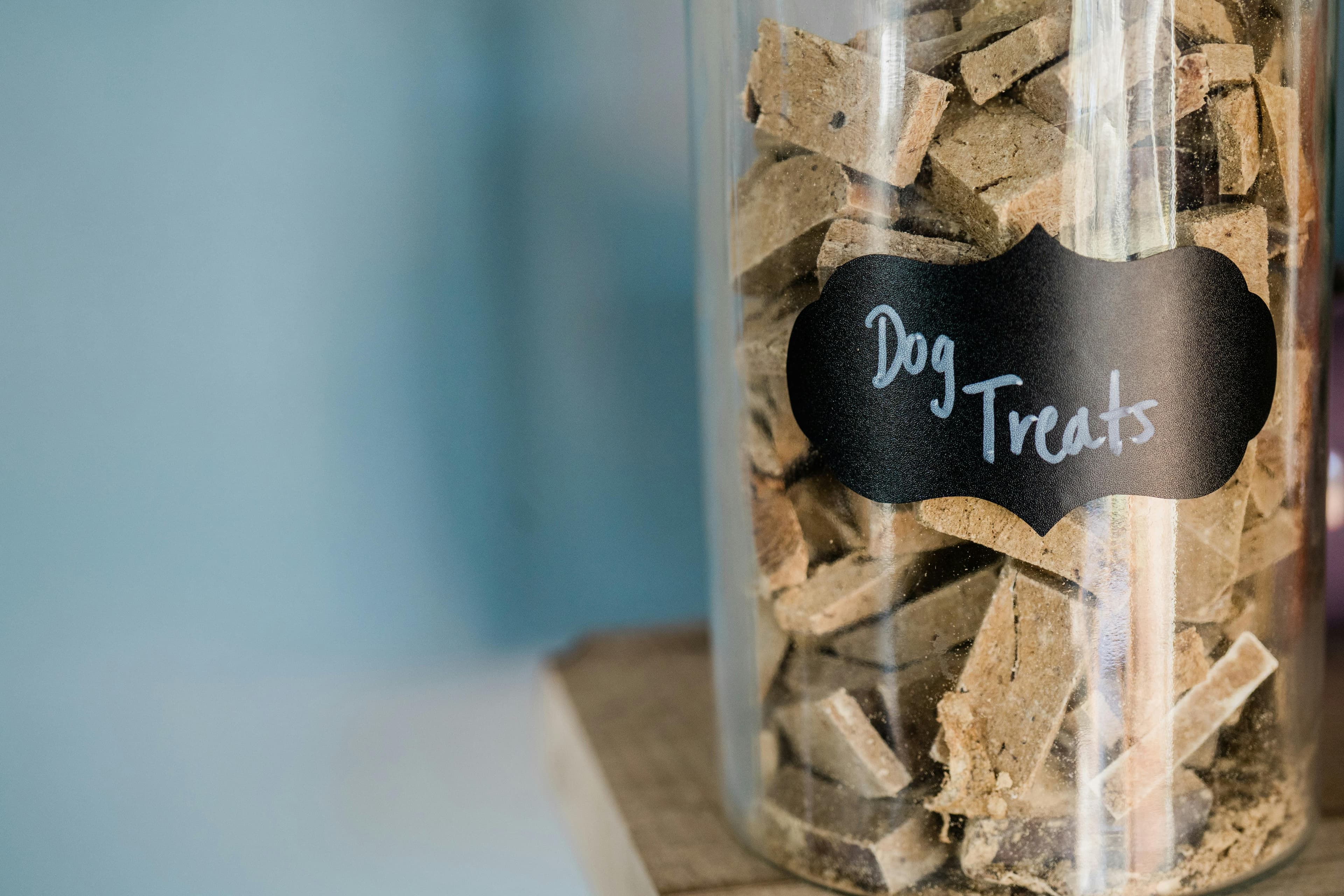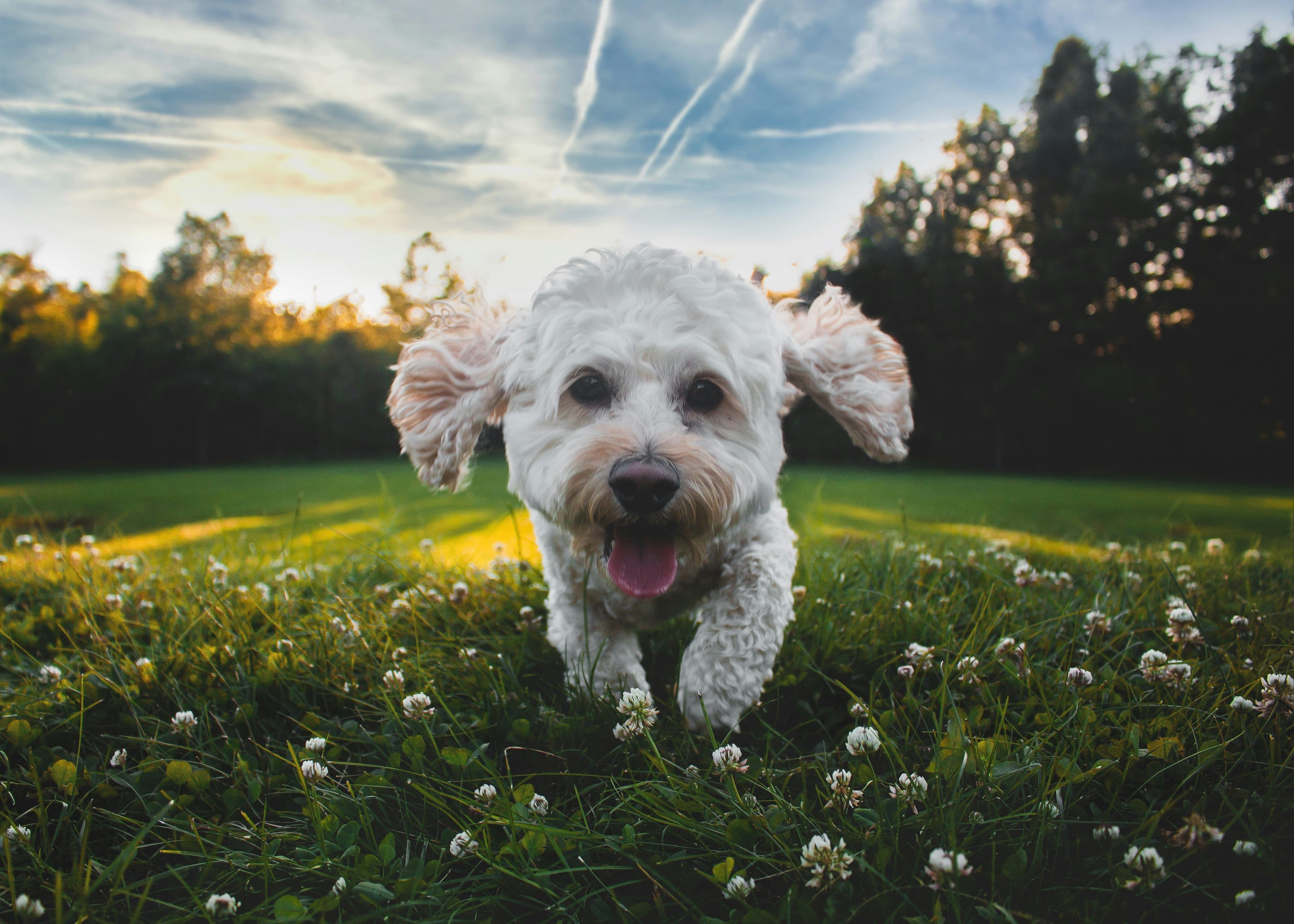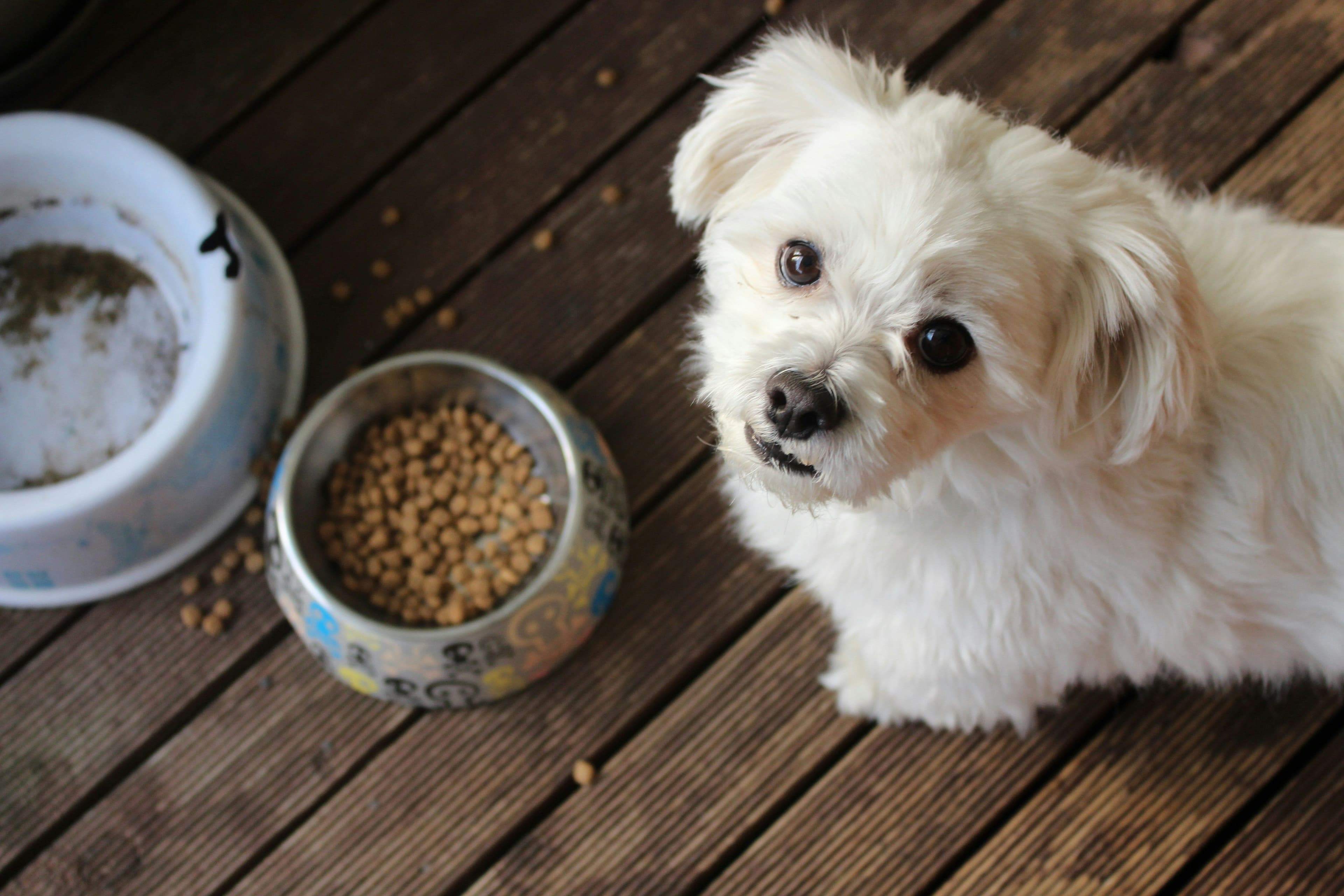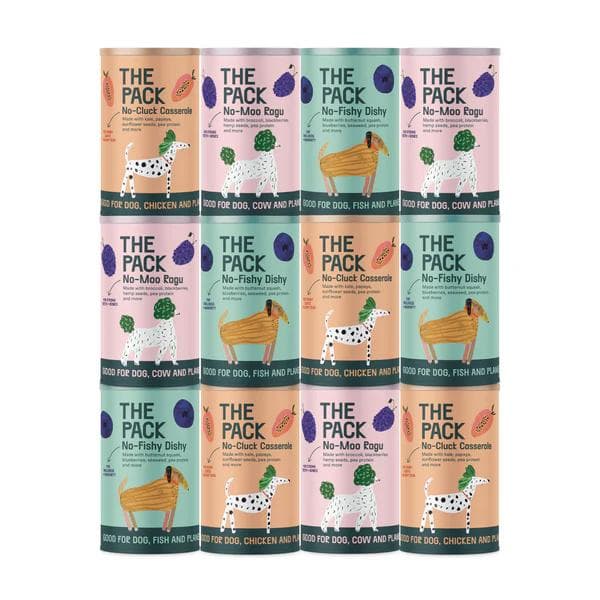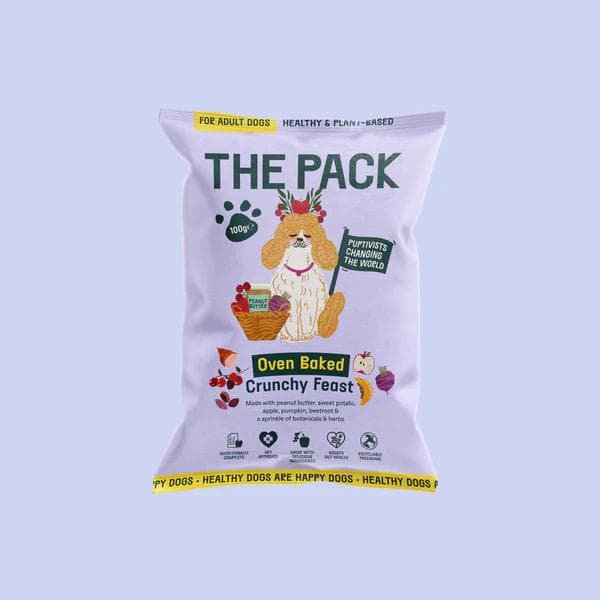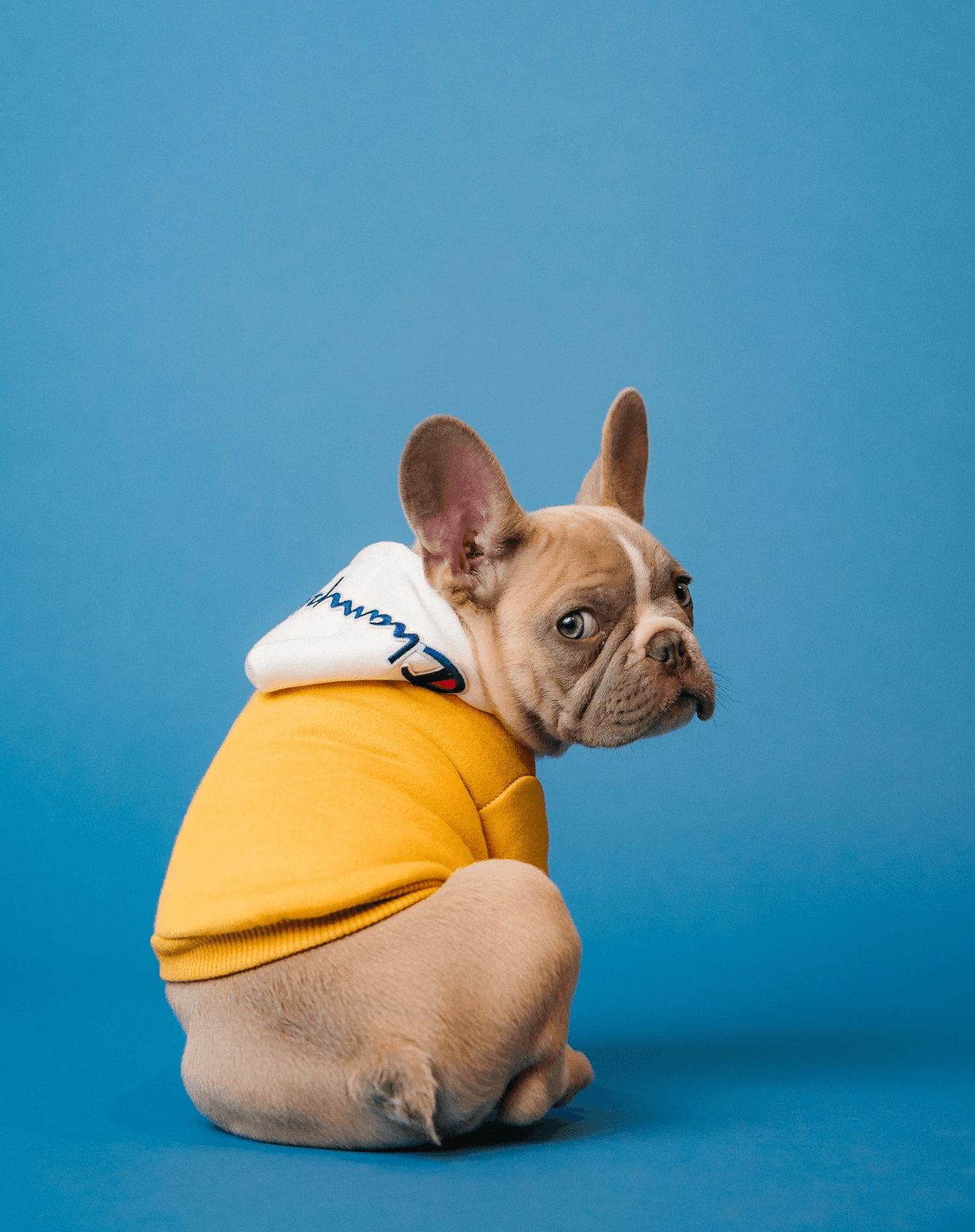Key Takeaways
Keeping your dog's food in the right place is very important for their health, energy, and happiness at mealtime. You can keep food from going bad, getting bugs, and losing important nutrients by taking the appropriate steps. Here are the most important things to remember while picking the best ways to store things:
- To keep things fresh and safe, you need airtight containers: Buy containers that are airtight to keep kibble safe from air, moisture, and dirt. This stops food from going bad and keeps it tasty and crunchy for longer.
- Use materials that are suitable for food and don't contain BPA: Choose containers made of glass, stainless steel, or plastic that doesn't contain BPA to keep your pet's food safe to eat and stop dangerous chemicals from leaking out.
- Keep the original bag for extra safety: Put the original packaging into the storage container. It has important information on the label about the components and the expiration dates, and it also protects against pests in another way.
- Pick the proper size storage container: To keep unused food from being exposed to air and other things, make sure the container size matches the amount of food you buy.
- Keep food in a cold, dry place: To keep the nutrients in the food and make it last much longer, keep it out of heat, sunshine, and humidity.
- Between refills, clean the containers: Mould or bacteria might form on leftover oils and crumbs from past refills. To keep things clean, make sure to wash and dry containers often.
- Keep pests out of your pet's food: Put your containers up off the floor and make sure they seal properly so that pests like rodents and insects can't get to the food.
- Use FIFO to keep things as fresh as possible: First In, First Out (FIFO) makes sure you use up the oldest food first, which cuts down on waste and makes sure your pet always gets the freshest food.
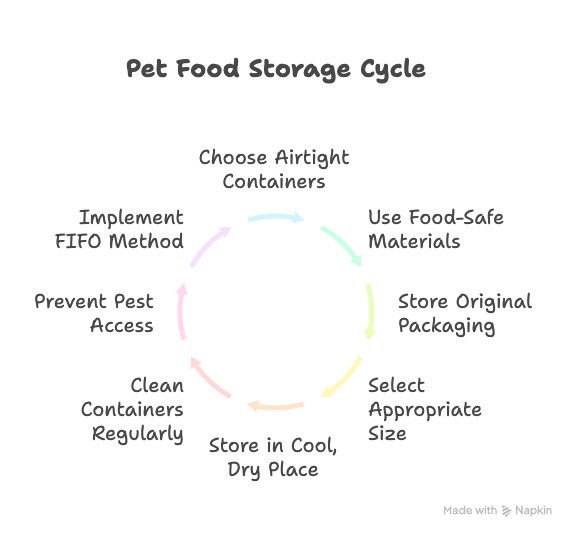
By following these best practices, you can keep your pet's food safe, fresh, and healthy while also cutting down on waste and protecting it from germs. For more information and storage alternatives that fit your needs, see the full advice below.
Introduction
The food your dog eats is the most important thing for their health, so appropriate storage is more than just a matter of convenience; it's also a way to keep it from going bad, getting bugs, and becoming sick. If you don't store your dog's kibble properly, it could lose its flavour and nutrients and even harm your dog's health. Fortunately, there are several simple rules you may follow to keep your pet's food in good shape.
The goal is to keep both safety and usefulness by choosing containers that can withstand environmental risks and making sure that the storage conditions are as good as they can be. These simple remedies will make sure that every meal is enjoyable, healthy, and free of contamination, whether you're working with big bulk bags or smaller speciality diets. Let's talk about the best ways to store your dog's food while also talking about some typical problems.
Important Storage Containers: How to Choose the Right Materials
To find the best dog food storage option, you need to know how the materials used affect keeping the food fresh, keeping it from getting contaminated, and keeping pests away. Different materials have their own benefits and cons, so you can choose the best one for your pet's needs, where you want to store it, and how easy it is for you to get to.
Containers Made of Stainless Steel
People love stainless steel containers since they are very strong and don't have any holes in them. Stainless steel doesn't hold onto smells or stains as plastic does, so it's the best choice for keeping kibble's original taste and smell. These containers also don't let bacteria develop in them and don't change when the weather changes, as when the temperature changes or the humidity gets in. They are a popular choice among professional pet handlers since they are of such good quality, even though they cost a little more.
Plastic Containers That Don't Contain BPA
BPA-free plastic containers are an excellent choice for pet owners who want a storage solution that is both affordable and useful. These solutions are great for everyday usage because they are light and easy to carry, especially when they come with food-grade certifications. Look for ones that have rubber gaskets and lock-in mechanisms. These will keep the food fresh for longer by making sure the seal is airtight. High-density polyethylene (HDPE) is very interesting because it is safe and doesn't let chemicals leak out in different situations.
Glass Jars
Glass is both beautiful and useful, as it keeps things fresh for a long time and looks good. The clear borosilicate glass makes it simple to see how much food is left and keeps air and moisture out by sealing tightly. Glass choices are heavier and more delicate, but they work well for smaller portions or specific diets that need to be watched closely for freshness and temperature management.
Choosing the correct material for your dog's food will keep its taste, nutrition, and general quality, which will save you money and protect your investments.
Airtight sealing is the most important part of keeping things fresh.
Airtight sealing technique is the key to keeping the quality of stored food. When exposed to oxygen, important nutrients are lost faster and flavour is lost, which dogs can smell right away. Airtight seals keep air from getting in, keeping things fresh and keeping out anything that might be harmful.
More advanced ways to seal
To make things safer, modern systems use double-sealing technology. Primary silicone gaskets make a compression seal, and secondary systems, like hoover removal systems, add another layer of protection against air getting in. These multi-stage setups are great for high-quality dog diets that are full of natural ingredients or preservatives and need to stay fresh for a long time.
Why Vacuum Sealing Is Important
Pet owners are starting to use hoover sealing more and more. Taking out almost all the air from the container slows down oxidation and makes kibble last a lot longer. Hand-pump vacuum tools and containers with built-in vacuum systems are both easy and effective ways for people to keep things fresh without needing fancy tools.
Getting Rid of Moisture with Care
Another big danger to your cat food supply is humidity. Bacteria and mould develop better in places with a lot of moisture, while kibble doesn't taste as well in places that are too dry. New containers now have built-in desiccant chambers or silica packets that assist keep humidity levels between 10% and 12%.
Your dog will get fresh, clean food from the top of the bag to the last kibble if you store it in a way that keeps it well-sealed and checked often.
Ways to Keep Pests Away: Protecting Food Supplies
To keep your dog's food safe, you need to take effective steps to get rid of pests. Not only do pests ruin food, but they can also put your pet's health at serious risk. Putting up the right boundaries and being aware of your surroundings greatly lowers these risks.
Adding physical barriers for protection
Using strong, heavy-duty containers that keep pests like insects and rodents out is the first step in getting rid of them. Containers made of metal or reinforced plastic with smooth, unexposed surfaces keep pests from chewing or climbing, and lids that fit tightly keep even little bugs out.
Deterrents That Are Good for the Environment
Don't use chemical pest repellents that could go into food. Instead, think about using natural methods like diatomaceous earth that is suitable for food or essential oil sprays (like peppermint or lavender) in storage spaces to keep pests from crawling or flying in.
Taking care of the environment ahead of time
Keeping things clean is very important. Regularly sweeping or vacuuming food storage areas gets rid of stray crumbs that pests like to eat. Putting containers on shelves or racks keeps rodents out and lets air flow through to keep moisture from building up.
Setting up a safe, multi-layered defence keeps undesirable intruders out and keeps your pet safe and your mind at ease.
Controlling the temperature and humidity: Keeping things fresh for a long time
Controlling the environment is very important for keeping dog food fresh, tasty, and full of nutrients. To keep food as healthy as the day you bought it, you need to keep an eye on and control both the temperature and the humidity.
Guidelines for the Right Temperature
The best place to keep dog food is at a cool, consistent temperature between 50 and 70 degrees Fahrenheit (10 and 21 degrees Celsius). Heat speeds up the breakdown of nutrients and makes food more likely to go bad. Cold temperatures can also change the texture of food. Stay away from places close to ovens, heat vents, or windows that get direct sunlight to keep temperature changes from happening that could be dangerous.
Managing Humidity with Precision
The relative humidity for dry kibble should be between 10 and 12 percent. Any greater amounts of mould and bacteria growth, while too low levels make things brittle, which affects texture and flavour. Storage containers with built-in desiccant or silica solutions let you control the humidity exactly, even when the weather is unpredictable.
Tools for Keeping an Eye on Conditions
Monitoring equipment is very important for keeping an eye on changes and fixing them quickly. It can be anything from a simple manual gauge to a digital thermometer that logs data. Careful control of the environment keeps food safe for a long time and increases its nutritional content over time.
Tailored Solutions for Controlling Portions and Storing Bulk
With custom storage systems, you can easily feed one Chihuahua or a whole house full of active Labradors while keeping the food fresh.
Easier Portion Control
When you measure out weekly servings into smaller, separate containers ahead of time, you cut down on the number of times bulk food is exposed to air. Containers for labelled or measured portions are easy to use and accurate, especially when you have to feed more than one pet with different nutritional demands.
Storing in Bulk for More Items
If your family eats a lot of food, choose containers that can store 25 to 50 pounds of kibble without putting safety at risk. These often include built-in dispensers that let you get little amounts without having to open the whole container.
Options for Travel and Portability
Lightweight and spill-proof storage systems are useful for people who travel a lot. Portable choices keep meals fresh and easy to get to no matter where you are.
Final Thoughts
Keeping your dog's food fresh is just one part of proper storage. It's also a direct investment in your pet's health and pleasure. You can make sure your dog's food lasts as long as possible and stays fresh by using high-quality materials like stainless steel, BPA-free plastic, or glass, together with airtight technology and controlled environmental elements like temperature and moisture.
Pest control and customised solutions for portioning or bulk storage make it even safer and easier to feed your beloved buddy. Storing your dog's food correctly not only helps your pet's health, but it also cuts down on waste, keeps food from going bad, and gives you peace of mind with every meal you serve.
So, the next time you feed your pet, you can be sure that you've done everything you can to keep its food safe, tasty, and nutritious. What you select to store and how you store it are the first steps in keeping your health.
